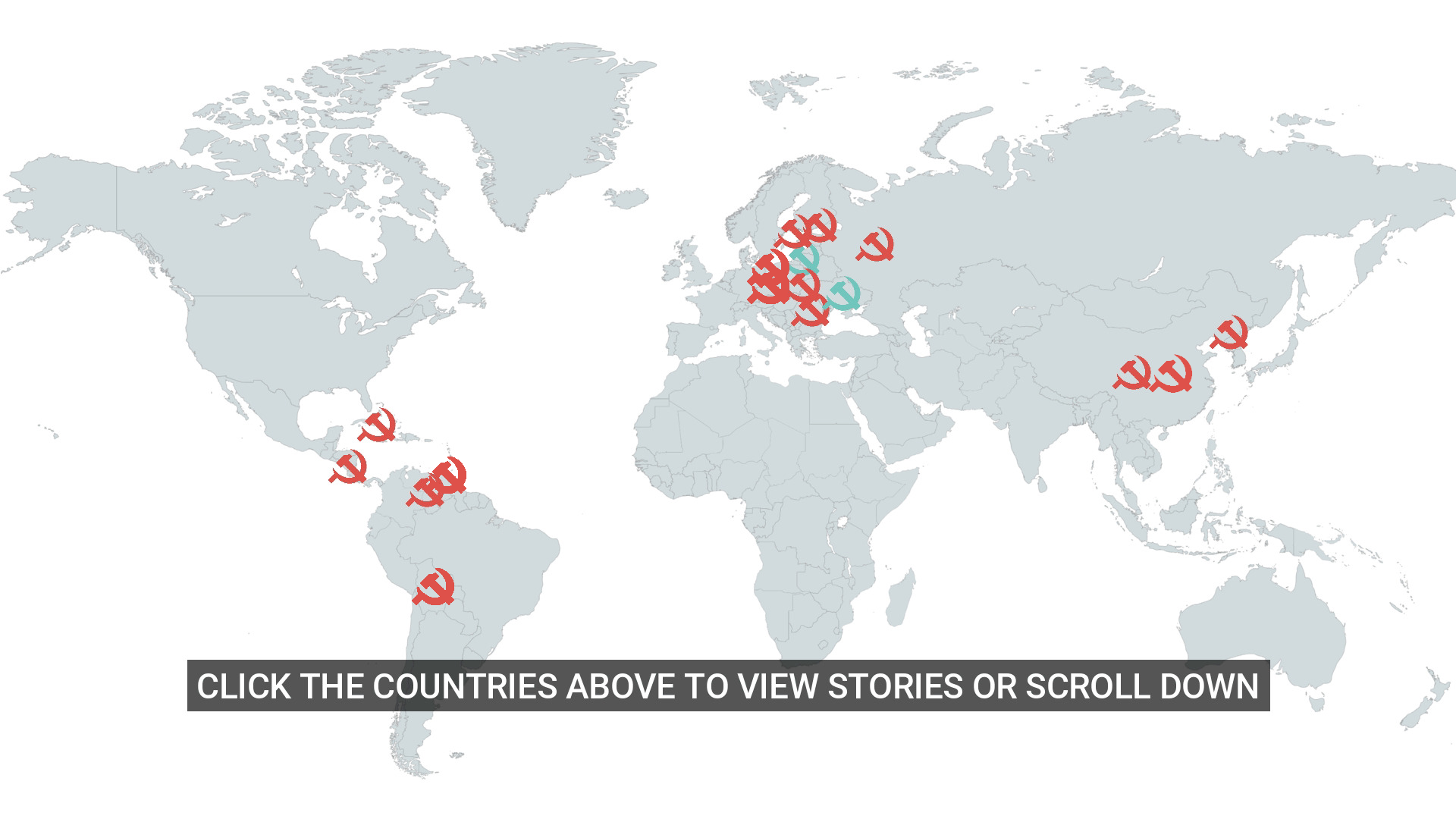Share this:
Survivors of Socialism
It’s not uncommon to hear Canadian-born politicians, university professors and activists speak fondly of socialism and communism.
Yet, why is it that people who have actually lived in such regimes want nothing to do with them?
SecondStreet.org’s Survivors of Socialism project includes interviews with people who came to Canada from socialist and communist regimes, as well as conversations with experts, a policy brief and more.
Most importantly, we asked Canadians who fled such regimes – are there any policies in Canada that concern you as they remind you of the country you left?

Canadians' Stories:
Aime Despaigne discusses her life growing up in socialist Cuba before she came to Canada
Boris Rassin talks about his life in communist Latvia while under the control of the former USSR
Lynn Hu talks about her experience growing up in China and the government’s abuse of human rights
Dana Kovanda talks about life as a child in communist Czechoslovakia and her escape to Canada
Paul Lenarczyk talks about life as a child in communist Poland and adjusting to life in Atlantic Canada
Yali Trost talks about free speech, forced abortion, hunger and more in communist China
Marco Navarro-Genié talks about the devastating effects of socialism in his home country of Nicaragua
Viorica Robinson describes life in Romania and her escape from the communist regime
Mart Salumae talks about life in communist Estonia and dealing with the regime’s religious persecution
Peter Tereschemko tells his story of growing up in Soviet Russia and the daily hardships of living there
Ana Rizo tells her story of growing up in socialist Venezuela and why she’s worried about Canada
Other Interviews & Content:
He was jailed for speaking out against Venezuela’s regime. Activist Rodrigo Diamanti shares his story
Short clip about why communism gets let off the hook for its atrocities
About those Che Guevara t-shirts: Gloria Alvarez discusses Guevara’s hateful ways
She escaped North Korea at just 13 years of age. SecondStreet.org interviews Yeonmi Park
Enzo fled socialist Venezuela so he could provide for his family. He shares his story with SecondStreet.org
Sweden is not socialism. John Stossel takes a closer look at the Scandinavian country
Imagine going from shopping in a sparse Cuban grocery store to a well-stocked U.S. store
China’s boom explained: Shifting from central planning to free markets and private businesses
Hear about how a simple visit to an American grocery store helped shift the Soviet Union away from socialism.
Why does it seem like people who grew up in socialist countries were always hungry?
Research:
SecondStreet.org thought it would be interesting to survey Canadians who come from socialist and communist countries to learn more about why they came to Canada. Further, we wanted to know if any policies in Canada concerned them as they reminded them of the countries they left. Our research paper looks at the track record of socialist and communist countries and includes the results of our survey.
To view our Survivors of Socialism policy brief – click here.
OTHER CONTENT:
While researching our paper, we came across a number of interesting articles, videos and research papers. Here are a few that might be of interest:
Why Socialism Failed: In 1995, University of Michigan Economics Professor Mark Perry wrote a popular column for the Foundation for Economic Education that outlined why he believed socialism failed as an ideology. You can read his column if you click here
Yeltsin Visits an American Grocery Store: “There would be a revolution.” That’s how former Russian President Boris Yeltsin thought the Russian people would respond if they saw what he saw back in 1989 at a random grocery store in Texas. Yeltsin wasn’t yet president and communisms hadn’t yet collapsed in his country. But he would later describe in his biography how this unplanned trip shattered his view of communism. To view the article – click here
Bolivia vs Venezuela: Both Venezuela and Bolivia have elected self-described socialist governments. One has nationalized countless businesses while the other has been not quite as interventionist. This article by the Foundation for Economic Education discusses the results – click here
The Myth of Scandinavian Socialism: The UK’s Institute of Economic Affairs (IEA) has a good article that examines why Scandinavian countries aren’t socialist. To view it – click here
You can help us continue to research and tell stories about this issue by making a donation
or sharing this content with your friends. Be sure to sign up for our updates too!
About those Che Guevara t-shirts: Gloria Alvarez discusses Guevara’s hateful ways


